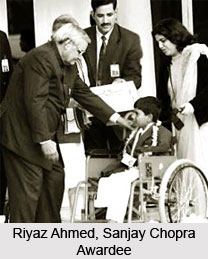Kings were highly dependent on ministers. In Arthashastra also the king has been advised that he can succeed only if assisted by capable ministers. The Yajurveda samhitas and the Brahmana literature mention in several places some functionaries known as ratnins, who possibly formed the king`s council. The ratnins consisted of royal relatives, departmental heads and courtiers. The crowned and the favourite queen belonged to the royal relatives. There was an apparent heir who may have been included in the King`s council. However he does not figure among the ratnins as during the coronation king`s eldest son is not likley to be old enough to take active part in the administration.
Priest figures in ratnins. The departmental heads included in the list of the ratnins are senani, suta, gramani, sangrahita and bhagadhuk. Senani is the commander-in-chief. Suta was the commander of the chariot corps of the royal army. There is also a probability that he might also have acted as the honorary charioteer to the king. Gramani in a small state may have been the prominent among the village headmen of the kingdom. Bhdgadhuk was the tax-collector and sangrahita was the treasurer.
Kshatta, akshavapa and paldgala were also part of the ratnins who belonged to the class of courtiers. Kshatta was the Royal Chamberlain. Akshavapa was the companion of the king at the game table. Paldgala was the king`s bosom companion. It is probable that he was the ambassador of the neighbouring state. Wealth in the Vedic age consisted of cows, and govikartana was an officer of higher rank who is connected with the royal herd of cattle. Taksha was the carpenter and rathakdra was the chariot-maker.
The status of the ratnins was high; at the time of the Vajpeya sacrifice, the king had to repair their houses. Samiti was a powerful body in the Vedic age. Ratnins were popular in the Vedic age. They left a more effective body to execute their functions which was the council of ministers. Mauryas and the Sungas had a habitual council of ministers known as Mantri-parishad. The Saka rulers ruled with the assistance of a council of mati sachivas and karma-sachivas. The ministers under the Maukharis exercised great power.
Medieval Hindu dynasties considered ministers as a vital part of the kingdom. Mahapradhana (prime minister), Mahamatyas (chief ministers) figure many inscription of later period. Mahamatya heads the list of the officers. The viceroys under the Mauryas had their own ministers.
Ministry consisted of seven or eight members according to Manu. The actual number of ministers depends on the needs of the situation in the state concerned. In big empires there were several ministers. The foreign office itself had several ministers. A small cabinet was employed in order to ensure secrecy. There used to be a smaller cabinet of important ministers consisting of three or four members. In addition to this ministry there was also a large body of advisers.
Ministry enunciated new policies, ensured successful working, to remove any difficulties, to supervise and direct the state policy regarding taxation and expenditure, to take measures for the proper education and training of the princes, to participate in their coronation, and to direct the foreign policy.
The status and pay of each succeeding minister were lower than that of the preceding minister. The priest stood in the relation of a spiritual preceptor to the king. He was to protect the nation by countering the magical charms of the enemy and ensuring its prosperity by performing the rituals. It was expected that he will be well versed in military art and religious rituals. The priest alone enjoys the distinction of having a ritual prescribed for his installation known as Brihaspatisava.
It was the duty of the Pratinidhi to represent for the king when he was ill on an expedition. This duty must have delegated upon the Crown-prince, when he had become old enough to presume the duties of his office.
The Foreign Minister`s work was divided state wise. He was expected to be well versed in the fourfold policy of conciliation, appeasement, war and causing dissentions in the enemy`s camp. As per inscriptions he was also in charge of drafting the copper plate charters, granting lands and villages to Brahmanas, temples and monasteries.
Pradvivaka was in charge of the judicial department. He was also considered as the chief-justice. He was expected to be well versed in the traditional and Smriti laws. He was also expert in evaluating evidence. He presided over the highest court of appeal in the absence of a king.
Pandita was in charge of religion and morality. He was expected to be well-versed in Dharmasastra as well as to find out which religious views and practices were current and popular which were prescribed in Sastras. It was his duty to take a comprehensive view in the matter and advise the government upon its socio-religious policy. Treasurer is also known as sumantra. He is the officer who is in charge of treasury and stores. It was his duty to find out what were the total collections and disbursements for the year and the balance at its end.
The Revenue Minister was also known as amatya. It was his duty to have an accurate inventory of villages, towns, mines and forests in the country. His office also had an accurate account of the land under cultivation.






